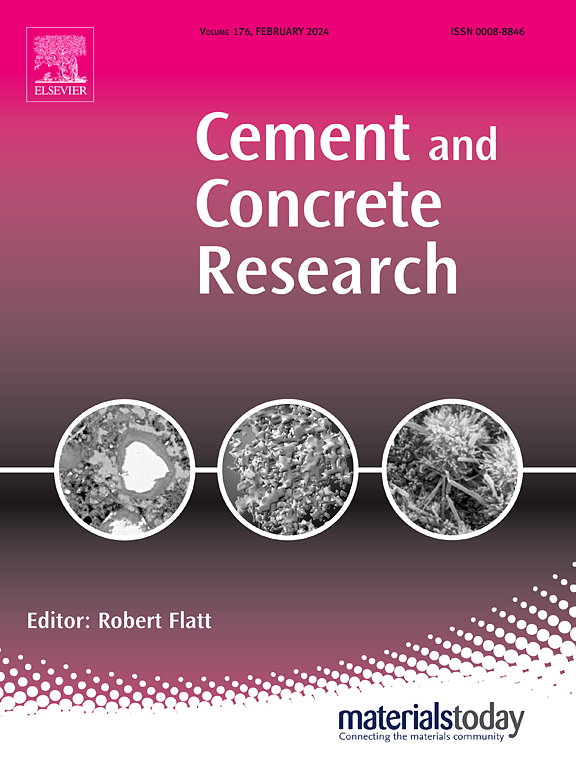富渣水泥浆体长期自然暴露后完全碳化区与非碳化区过渡带的表征
IF 13.1
1区 工程技术
Q1 CONSTRUCTION & BUILDING TECHNOLOGY
引用次数: 0
摘要
由于自然暴露条件下CO2的逐渐扩散,在离富渣水泥浆体表面不同深度处存在不同程度的碳化区域。虽然对酚酞喷雾识别的完全碳酸化带进行了广泛的研究,但位于完全碳酸化区和非碳酸化区之间的过渡区受到的关注相对较少。因此,本研究旨在通过探索其微观结构、微力学和矿物学性质来弥补这一研究空白。结果表明,碳化引起的损伤超出了由酚酞识别的完全碳化区。特别是在靠近碳化区的过渡区,纳米压痕结果表明,该区域的微力学性能甚至低于完全碳化区的微力学性能。此外,矿物学研究表明,碳化深度保持在含渣混合物失去绿色的范围内。通过对比不同矿渣组成的试样,发现该褪色绿区的深度可作为评价含渣共混物抗碳化性能的重要指标。本文章由计算机程序翻译,如有差异,请以英文原文为准。
Characterization of the transitional zone between fully carbonated and non‑carbonated areas in slag-rich cement paste after long-term natural exposure
Due to the gradual diffusion of CO2 under natural exposure, areas with varied degrees of carbonation exist at different depths from the surface of slag-rich cement paste. While extensive research has been dedicated to investigating the fully carbonated zone as identified by phenolphthalein spray, the transitional zone, located between the fully carbonated and the uncarbonated regions, has received comparatively less attention. This study thus aims to address this research gap by exploring its microstructural, micromechanical, and mineralogical properties. The results reveal that carbonation-induced damage extends beyond the fully carbonated zone as identified by phenolphthalein. Particularly in the transitional area close to the carbonated zone, nanoindentations results reveal that micromechanical properties of this area are even lower to that of the fully carbonated zone. In addition, mineralogical investigation suggest that the depth of carbonation stays within the range where slag-containing blends loses its green coloration. By comparing specimens with different slag composition, it was found that the depth of this faded green area can be an important indicator to assess the carbonation resistance of slag-containing blends.
求助全文
通过发布文献求助,成功后即可免费获取论文全文。
去求助
来源期刊

Cement and Concrete Research
工程技术-材料科学:综合
CiteScore
20.90
自引率
12.30%
发文量
318
审稿时长
53 days
期刊介绍:
Cement and Concrete Research is dedicated to publishing top-notch research on the materials science and engineering of cement, cement composites, mortars, concrete, and related materials incorporating cement or other mineral binders. The journal prioritizes reporting significant findings in research on the properties and performance of cementitious materials. It also covers novel experimental techniques, the latest analytical and modeling methods, examination and diagnosis of actual cement and concrete structures, and the exploration of potential improvements in materials.
 求助内容:
求助内容: 应助结果提醒方式:
应助结果提醒方式:


